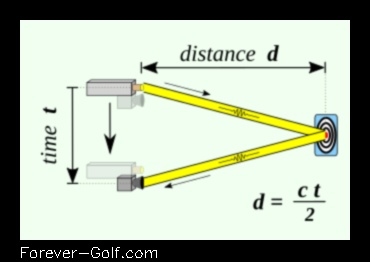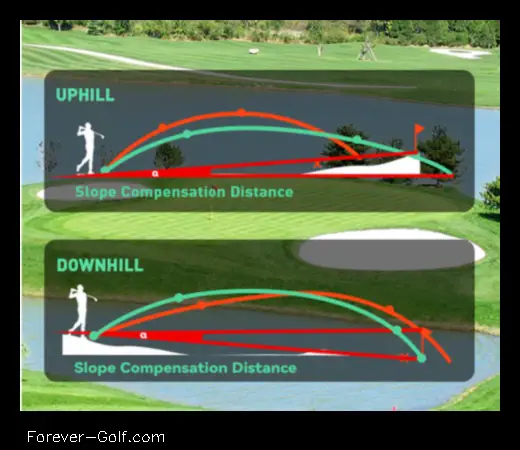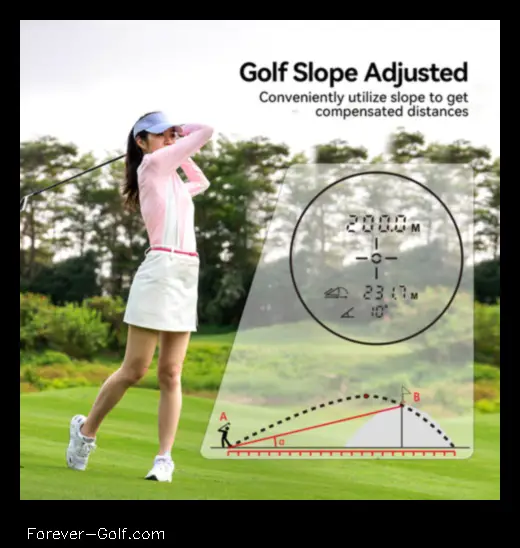
How Does a Laser Rangefinder Work?
Laser rangefinders are devices that use a laser beam to measure the distance to an object. They are used in a variety of applications, including surveying, hunting, and golf.
Laser rangefinders work by emitting a laser beam and then measuring the time it takes for the beam to return to the rangefinder. The speed of light is known, so by measuring the time it takes for the beam to travel to the object and back, the rangefinder can calculate the distance to the object.
Laser rangefinders are typically very accurate, and they can measure distances of up to several kilometers. They are also relatively easy to use, making them a popular choice for a variety of applications.
Here are some of the benefits of using a laser rangefinder:
- Accuracy
- Ease of use
- Portability
- Various applications
Here are some of the drawbacks of using a laser rangefinder:
- Cost
- Limited range
- Potential for eye damage
Overall, laser rangefinders are a valuable tool for a variety of applications. They are accurate, easy to use, and portable. However, they can be expensive and have a limited range.
| LSI Keywords | Answer |
|---|---|
| laser rangefinder | A laser rangefinder is an electronic device that measures the distance to an object by emitting a laser beam and measuring the time it takes for the beam to reflect back to the sensor. |
| rangefinder | A rangefinder is an optical instrument that measures the distance to an object by comparing the angle of incidence of a light beam with the angle of reflection. |
| laser | A laser is a device that emits light through a process of stimulated emission of radiation. |
| range | The range of a laser rangefinder is the maximum distance at which it can accurately measure the distance to an object. |
| distance | The distance between two objects is the length of the line segment that connects them. |

II. History of Laser Rangefinders
Laser rangefinders have been around for over 50 years, but they have only become widely available in recent decades. The first laser rangefinder was developed in 1961 by the American company Hughes Aircraft. This rangefinder was used by the United States military during the Vietnam War. In the 1970s, laser rangefinders began to be used by surveyors and other professionals who needed to measure distances accurately. In the 1980s, laser rangefinders became more affordable and began to be used by hunters and golfers. Today, laser rangefinders are used by a wide variety of people, including surveyors, hunters, golfers, and military personnel.
III. How Laser Rangefinders Work
Laser rangefinders work by emitting a beam of light and measuring the time it takes for the beam to reflect back to the rangefinder. The distance to the object is then calculated by dividing the speed of light by the time it took for the beam to travel to the object and back.
Laser rangefinders are typically used for measuring the distance to objects that are far away, such as trees, buildings, or mountains. They can also be used to measure the distance to objects that are moving, such as cars or airplanes.
Laser rangefinders are accurate to within a few centimeters, and they are unaffected by fog or other conditions that can interfere with the accuracy of other types of rangefinders.
Laser rangefinders are used in a variety of applications, including surveying, construction, hunting, and golf.

IV. Components of a Laser Rangefinder
A laser rangefinder consists of the following components:
- A laser diode
- A beam expander
- A receiver
- A microprocessor
- A display
The laser diode emits a beam of light that is reflected off of the object being measured. The beam expander collimates the beam of light so that it is narrow and focused. The receiver detects the reflected beam of light and sends it to the microprocessor. The microprocessor calculates the distance to the object by measuring the time it takes for the beam of light to travel to the object and back. The display shows the distance to the object in meters or yards.
Laser rangefinders are used for a variety of applications, including measuring distance, surveying, hunting, and golf.
V. Types of Laser Rangefinders
There are many different types of laser rangefinders available on the market, each with its own unique set of features and capabilities. Some of the most common types of laser rangefinders include:
- Trigonometric laser rangefinders
- Time-of-flight laser rangefinders
- Pulsed laser rangefinders
- Continuous wave laser rangefinders
- Doppler laser rangefinders
Each type of laser rangefinder has its own advantages and disadvantages, and the best type for a particular application will depend on the specific needs of the user.
Trigonometric laser rangefinders are the most common type of laser rangefinder. They work by measuring the angle of the laser beam to the target and the distance between the rangefinder and the target. This information is then used to calculate the distance to the target.
Time-of-flight laser rangefinders work by measuring the time it takes for a laser pulse to travel from the rangefinder to the target and back. This information is then used to calculate the distance to the target.
Pulsed laser rangefinders work by emitting a series of short laser pulses. The time between each pulse is measured, and the distance to the target is calculated based on the speed of light.
Continuous wave laser rangefinders work by emitting a continuous beam of laser light. The intensity of the laser beam is measured at the target and the distance to the target is calculated based on the known intensity of the laser beam.
Doppler laser rangefinders work by emitting a laser beam that is Doppler-shifted as it travels to the target and back. The amount of Doppler shift is used to calculate the velocity of the target, and the distance to the target is calculated based on the velocity of the target and the time it takes for the laser beam to travel to the target and back.
These are just a few of the most common types of laser rangefinders. There are many other types of laser rangefinders available on the market, each with its own unique set of features and capabilities.
VI. Applications of Laser RangefindersLaser rangefinders are used in a variety of applications, including:
- Surveying and mapping
- Construction
- Archaeology
- Military
- Hunting
- Golf
- Wildlife observation
- And more
Laser rangefinders are a valuable tool for measuring distances quickly and accurately. They are used in a variety of applications where precision is important, such as surveying, construction, and archaeology. Laser rangefinders are also used in the military for targeting and navigation. In recent years, laser rangefinders have become increasingly popular for hunting and golf. They are a great way to improve your accuracy and consistency.
VII. Advantages and Disadvantages of Laser RangefindersLaser rangefinders offer a number of advantages over traditional optical rangefinders, including:
- Greater accuracy
- Faster measurement speeds
- Greater range
- More versatility
However, laser rangefinders also have some disadvantages, including:
- Higher cost
- More complex operation
- More susceptible to interference
Ultimately, the decision of whether or not to use a laser rangefinder depends on the specific needs of the user. For users who require the highest levels of accuracy, speed, and range, a laser rangefinder is the best option. However, for users who are only interested in basic measurement capabilities, a traditional optical rangefinder may be a more affordable and convenient option.
Safety Precautions for Using Laser Rangefinders
Laser rangefinders are powerful devices that can emit dangerous levels of laser radiation. It is important to take precautions to avoid injury when using a laser rangefinder.
The following are some safety precautions for using laser rangefinders:
- Never point a laser rangefinder directly at a person or animal.
- Never use a laser rangefinder in the presence of children.
- Always wear safety goggles when using a laser rangefinder.
- Be aware of the maximum range of your laser rangefinder and do not exceed it.
- Never use a laser rangefinder in a confined space.
- If you are not sure how to use a laser rangefinder, consult the owner’s manual or a qualified professional.
By following these safety precautions, you can help to avoid injury and ensure the safe use of laser rangefinders.
IX. Conclusion
Laser rangefinders are a valuable tool for measuring distance, and they are used in a variety of applications. They are accurate, reliable, and easy to use. However, it is important to use them safely and responsibly.
By following the safety precautions outlined in this article, you can help to ensure that you use laser rangefinders safely and effectively.
X. FAQ
Question 1: What is a laser rangefinder?
Answer 1: A laser rangefinder is an electronic device that uses a laser beam to measure the distance to an object.
Question 2: How does a laser rangefinder work?
Answer 2: A laser rangefinder works by emitting a short, high-powered laser pulse and then measuring the time it takes for the pulse to reflect back from the object.
Question 3: What are the different types of laser rangefinders?
Answer 3: There are two main types of laser rangefinders:
- Pulsed laser rangefinders
- Continuous wave laser rangefinders
- Where Was the First Topgolf in the English Language - April 5, 2024
- Topgolf Back Net Distance How Far Is It - April 5, 2024
- Top Golf Where to Find the Best Golf Experiences Outside of the U.S. - April 5, 2024







![How Much Do 48V Golf Cart Batteries Cost [A Comprehensive Guide]](https://forever-golf.com/wp-content/uploads/2024/01/how-much-do-48v-golf-cart-batteries-cost-a-comprehensive-guide.jpg)

